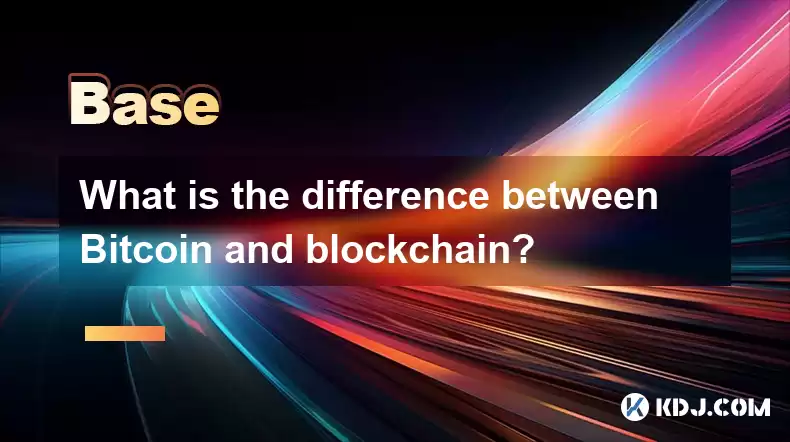-
 Bitcoin
Bitcoin $115100
1.27% -
 Ethereum
Ethereum $3675
2.71% -
 XRP
XRP $2.995
1.45% -
 Tether USDt
Tether USDt $1.000
0.02% -
 BNB
BNB $769.8
2.64% -
 Solana
Solana $168.0
3.25% -
 USDC
USDC $0.9999
-0.01% -
 TRON
TRON $0.3371
1.48% -
 Dogecoin
Dogecoin $0.2051
3.36% -
 Cardano
Cardano $0.7394
2.30% -
 Hyperliquid
Hyperliquid $38.15
0.42% -
 Stellar
Stellar $0.3966
-0.36% -
 Sui
Sui $3.486
2.93% -
 Chainlink
Chainlink $16.72
2.52% -
 Bitcoin Cash
Bitcoin Cash $568.0
4.36% -
 Hedera
Hedera $0.2440
2.59% -
 Ethena USDe
Ethena USDe $1.001
0.04% -
 Avalanche
Avalanche $22.16
2.06% -
 Litecoin
Litecoin $119.1
-0.73% -
 UNUS SED LEO
UNUS SED LEO $8.991
0.04% -
 Toncoin
Toncoin $3.232
-0.39% -
 Shiba Inu
Shiba Inu $0.00001233
2.82% -
 Uniswap
Uniswap $9.717
2.53% -
 Polkadot
Polkadot $3.664
1.85% -
 Dai
Dai $1.000
0.01% -
 Monero
Monero $281.2
-3.89% -
 Bitget Token
Bitget Token $4.350
1.55% -
 Cronos
Cronos $0.1428
5.07% -
 Pepe
Pepe $0.00001050
3.68% -
 Aave
Aave $262.3
3.54%
What is the difference between Bitcoin and blockchain?
Bitcoin, a cryptocurrency, utilizes blockchain technology—a decentralized ledger—to record transactions; however, blockchain's applications extend far beyond Bitcoin to various industries.
Mar 06, 2025 at 03:24 am

Key Points:
- Bitcoin is a specific cryptocurrency, while blockchain is the underlying technology that supports it.
- Bitcoin uses a blockchain to record and verify transactions.
- Blockchain is a decentralized, distributed ledger technology with applications beyond cryptocurrency.
- Bitcoin's value fluctuates, while blockchain technology's value lies in its potential for various applications.
- Understanding the distinction clarifies the relationship between a specific application and its enabling technology.
What is the difference between Bitcoin and blockchain?
The terms "Bitcoin" and "blockchain" are often used interchangeably, leading to confusion. However, they represent distinct concepts within the cryptocurrency landscape. Bitcoin is a specific cryptocurrency, a digital or virtual currency designed to work as a medium of exchange. It uses cryptography to secure and verify transactions as well as to control the creation of new units of the currency. Think of Bitcoin as a specific car model.
Blockchain, on the other hand, is the underlying technology that enables Bitcoin and many other cryptocurrencies to function. It's a decentralized, distributed, and public digital ledger that records transactions across many computers. This makes it incredibly secure and transparent. This is like the engine that powers many different types of cars, not just one specific model. The blockchain stores information in "blocks" which are then chained together chronologically and cryptographically linked, making it virtually impossible to alter past transactions.
The core difference lies in their scope and function. Bitcoin is a specific application built on top of blockchain technology. Blockchain is a general-purpose technology with potential applications far beyond cryptocurrencies, including supply chain management, voting systems, and digital identity verification. Bitcoin leverages the security and transparency of blockchain to facilitate its peer-to-peer transactions.
Bitcoin's value is determined by market forces – supply and demand – leading to significant price volatility. The value of blockchain technology, however, is in its potential to revolutionize various industries by offering secure, transparent, and efficient systems. Its value is less tied to market fluctuations and more to its inherent capabilities. One is a specific asset, the other a technological infrastructure.
Let's delve deeper into the characteristics of each:
Bitcoin:
- Decentralized: No single entity controls Bitcoin. Transactions are verified by a network of computers (miners).
- Cryptographically Secure: Advanced encryption techniques protect transactions from tampering.
- Limited Supply: Only 21 million Bitcoins will ever be created.
- Volatile Value: The price of Bitcoin is highly susceptible to market speculation.
- Transaction Fees: Users pay fees to process transactions on the network.
- Mining: The process of verifying and adding new transactions to the blockchain.
Blockchain:
- Decentralized Ledger: A shared, immutable record of transactions distributed across multiple computers.
- Transparency: All transactions are publicly viewable (though identities may be pseudonymous).
- Immutability: Once a transaction is recorded, it cannot be altered or deleted.
- Security: Cryptography and consensus mechanisms ensure data integrity.
- Scalability: The ability of the blockchain to handle a large number of transactions efficiently varies depending on the specific implementation.
- Various Implementations: Different types of blockchains exist, including public, private, and permissioned blockchains.
The relationship is akin to a car and its engine. You can't have a car without an engine, and Bitcoin cannot function without blockchain technology. However, the engine (blockchain) can power many other vehicles (applications) beyond just one specific model (Bitcoin).
Common Questions:
Q: Can I use blockchain without using Bitcoin?
A: Yes, absolutely. Blockchain technology has numerous applications beyond cryptocurrencies. Many companies are exploring its use in supply chain management, healthcare, voting systems, and more. Bitcoin is just one application of this powerful technology.
Q: Is blockchain technology secure?
A: Blockchain's security stems from its decentralized nature and cryptographic techniques. The distributed ledger makes it extremely difficult to tamper with data, as any alteration would require changing the data across a vast network of computers. However, vulnerabilities can still exist within specific implementations of blockchain technology, and smart contracts deployed on blockchains have been subject to exploits in the past.
Q: How does Bitcoin use blockchain?
A: Bitcoin uses a public blockchain to record all transactions. Each transaction is verified by miners who solve complex cryptographic puzzles. Once verified, the transaction is added to a block, which is then added to the chain, creating a permanent and auditable record.
Q: What are the advantages of blockchain over traditional databases?
A: Blockchain offers several advantages over traditional databases, including enhanced security due to decentralization, increased transparency through public access to transaction history (in public blockchains), and improved immutability, preventing unauthorized data alteration.
Q: What are the limitations of blockchain technology?
A: While blockchain offers many advantages, it also has limitations. Scalability can be a challenge, as processing large numbers of transactions can be slow and energy-intensive. Regulation is still evolving, and the technology's complexity can be a barrier to adoption for some users. Furthermore, the energy consumption of proof-of-work based blockchains like Bitcoin is a significant environmental concern.
Disclaimer:info@kdj.com
The information provided is not trading advice. kdj.com does not assume any responsibility for any investments made based on the information provided in this article. Cryptocurrencies are highly volatile and it is highly recommended that you invest with caution after thorough research!
If you believe that the content used on this website infringes your copyright, please contact us immediately (info@kdj.com) and we will delete it promptly.
- Fireverse Token: Igniting a Musical Revolution in Web3
- 2025-08-07 08:27:45
- Ethereum, L2 Withdrawals, and Decentralization: A New Yorker's Take
- 2025-08-07 08:32:33
- Avalanche vs. Ruvi AI: Daily Sales Tell a Story of Crypto Disruption
- 2025-08-07 06:29:35
- DeSoc: The Crypto to Buy Now for a Decentralized Future (and Maybe 43x Gains!)
- 2025-08-07 06:50:16
- Arctic Pablo Coin: Riding the Meme Coin Wave with a Deflationary Twist
- 2025-08-07 07:18:13
- XRP Price Skyrocket? Decoding the Cryptocurrency's Next Move
- 2025-08-07 07:31:50
Related knowledge

What is the difference between CeFi and DeFi?
Jul 22,2025 at 12:28am
Understanding CeFi and DeFiIn the world of cryptocurrency, CeFi (Centralized Finance) and DeFi (Decentralized Finance) represent two distinct financia...

How to qualify for potential crypto airdrops?
Jul 23,2025 at 06:49am
Understanding What Crypto Airdrops AreCrypto airdrops refer to the distribution of free tokens or coins to a large number of wallet addresses, often u...

What is a crypto "airdrop farmer"?
Jul 24,2025 at 10:22pm
Understanding the Role of a Crypto 'Airdrop Farmer'A crypto 'airdrop farmer' refers to an individual who actively participates in cryptocurrency airdr...

What is the difference between a sidechain and a Layer 2?
Jul 20,2025 at 11:35pm
Understanding the Concept of SidechainsA sidechain is a separate blockchain that runs parallel to the main blockchain, typically the mainnet of a cryp...

What is the Inter-Blockchain Communication Protocol (IBC)?
Jul 19,2025 at 10:43am
Understanding the Inter-Blockchain Communication Protocol (IBC)The Inter-Blockchain Communication Protocol (IBC) is a cross-chain communication protoc...

How does sharding improve scalability?
Jul 20,2025 at 01:21am
Understanding Sharding in BlockchainSharding is a database partitioning technique that is increasingly being adopted in blockchain technology to enhan...

What is the difference between CeFi and DeFi?
Jul 22,2025 at 12:28am
Understanding CeFi and DeFiIn the world of cryptocurrency, CeFi (Centralized Finance) and DeFi (Decentralized Finance) represent two distinct financia...

How to qualify for potential crypto airdrops?
Jul 23,2025 at 06:49am
Understanding What Crypto Airdrops AreCrypto airdrops refer to the distribution of free tokens or coins to a large number of wallet addresses, often u...

What is a crypto "airdrop farmer"?
Jul 24,2025 at 10:22pm
Understanding the Role of a Crypto 'Airdrop Farmer'A crypto 'airdrop farmer' refers to an individual who actively participates in cryptocurrency airdr...

What is the difference between a sidechain and a Layer 2?
Jul 20,2025 at 11:35pm
Understanding the Concept of SidechainsA sidechain is a separate blockchain that runs parallel to the main blockchain, typically the mainnet of a cryp...

What is the Inter-Blockchain Communication Protocol (IBC)?
Jul 19,2025 at 10:43am
Understanding the Inter-Blockchain Communication Protocol (IBC)The Inter-Blockchain Communication Protocol (IBC) is a cross-chain communication protoc...

How does sharding improve scalability?
Jul 20,2025 at 01:21am
Understanding Sharding in BlockchainSharding is a database partitioning technique that is increasingly being adopted in blockchain technology to enhan...
See all articles

























































































